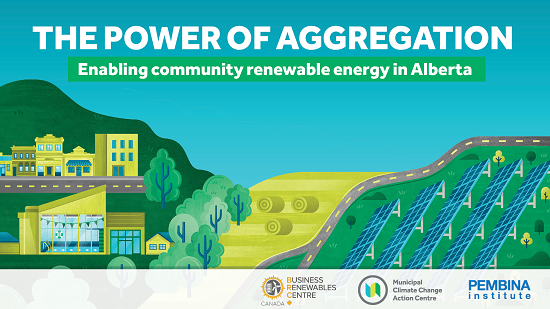 Friday, September 27, 2024
Friday, September 27, 2024  Friday, September 27, 2024
Friday, September 27, 2024 
In today’s world of mega-sized solar and wind development, smaller municipalities need to band together to access renewable energy, according to new collaborative research by the Pembina Institute, the Business Renewables Centre-Canada and the Municipal Climate Change Action Centre.
The majority of municipalities surveyed said they are interested in renewable energy as a way to achieve their climate goals. Buying renewable energy through long-term contracts would also protect municipal budgets from rising electricity costs. But often these communities are too small to attract a developer or to attract a buyer if they build their own solar or wind projects.
The solution is aggregation: pooling the energy demand or supply of several municipalities can address the barriers brought on by scale. Stacking the power demand of several smaller municipalities could make them an attractive partner for renewable energy developers.
Half of the 36 survey respondents indicated interest in pursuing aggregation to achieve scale, with another 13 looking for further information before taking a stance.
“Municipal aggregation is a great way to leverage the strengths of different communities, too,” said Tristan Walker, energy project lead for the Town and Municipal District of Pincher Creek. “Some communities have strengths in expertise, others have access to capital or location and sites, while others have lots of internal capacity.”
Municipalities need help to make it work, though. Municipal staff pointed out ways to make it easier for them to participate in aggregation, including:
Enabling eager municipalities to participate in renewable energy allows them to benefit from the local economic development opportunities these projects generate, the protection they provide from volatile energy costs, and the jobs that they create. This also allows communities to participate in Canada’s goal of a net-zero grid by 2035, just as our neighbours to the south are doing.